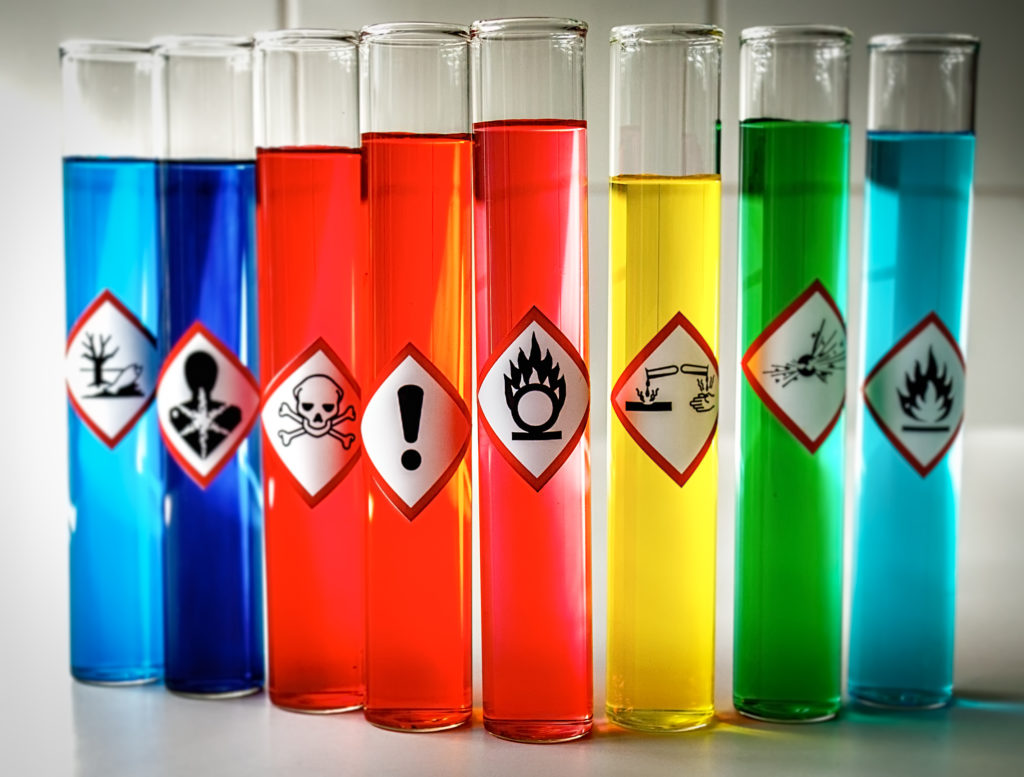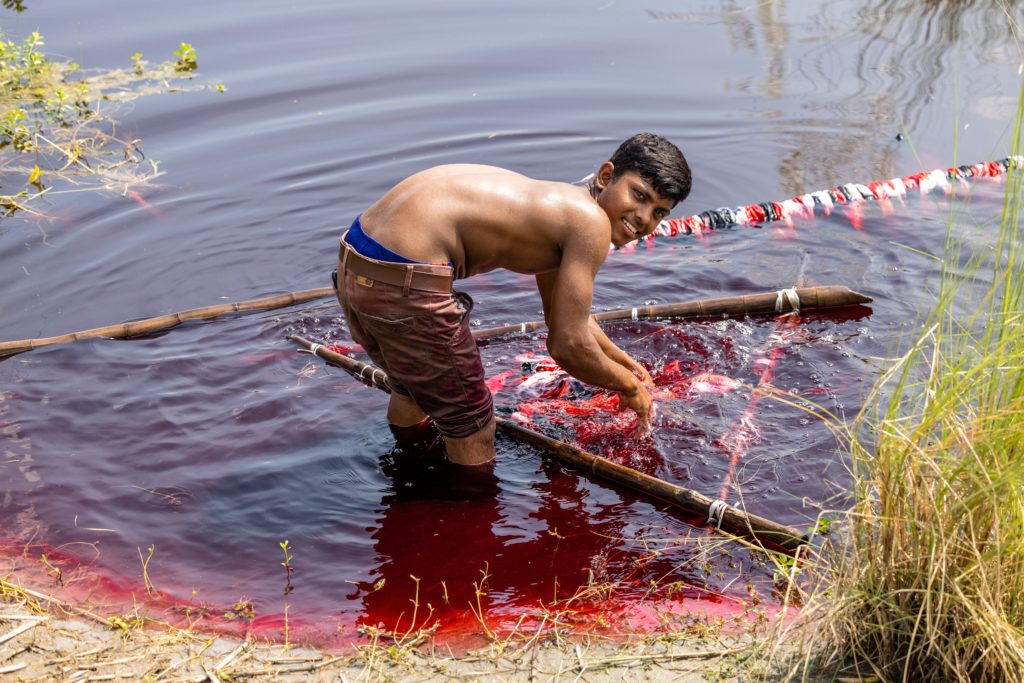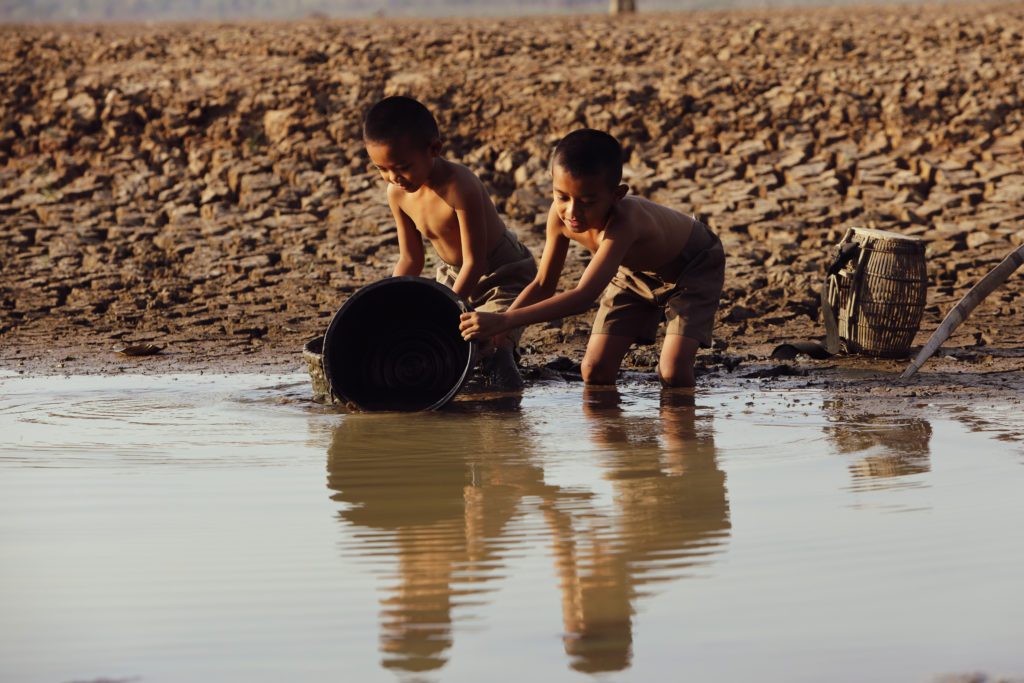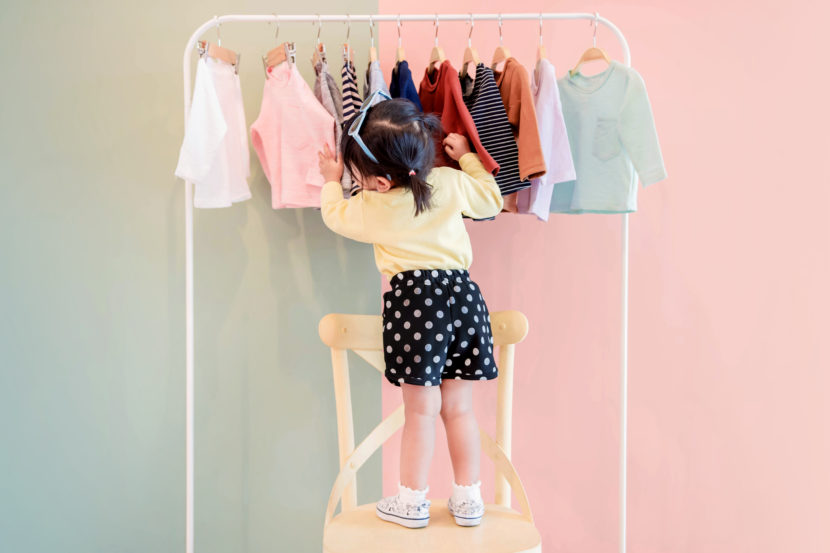Like many industries that manufacture products for our everyday use, the mass use of chemical products in industrial processes in the textile industry has attracted the attention of international regulatory bodies. It represents a danger to the health as well as to the environment of many populations in the world, affecting in particular children.
The textile industry – a threat to children’s rights
In recent years, numerous harmful effects of the modern textile industry have been brought to light, resulting in violations of a variety of fundamental human rights that are particularly applicable to children’s rights. (Baruta, 2021).
More precisely, another area of concern related to the textile industry has strongly drawn attention from governments and international organizations: the use of chemical substances in the production of our clothes, which constitutes a violation of the right to health along with children’s environmental rights.
The origin of our toxic clothes
In order to keep up with the pace of modern production and to offer more and more clothes at attractive prices, the textile industry seeks to reduce its production costs. The massive use of chemical products during the manufacturing process of our clothes is one of the principal factors of cost reduction. For instance, it is mentioned that the textile industry uses more than 8,000 chemical substances (Kant, 2012). For illustrative purposes, it is estimated that the production of 1 kilogram of t-shirts requires 4 kilograms of chemical products (Council of the European Union, 2012).

Alarming health consequences
What is of most concern is that a considerable number of these chemical products used by the textile industry have damaging effects both on our health and the environment. In 2014, the Swedish Agency of Chemical Products had already raised the alarm about these consequences. Among 2,450 chemical substances evaluated, 750 of them were classified as dangerous to human health and 440 were classified as threatening to the environment (KEMI, 2014).
Our children, populations at-risk
Our children on the front line are exceptionally sensitive to these exposures and are considered an at-risk population, at the same level as pregnant women. Indeed, developing fetuses, infants, and children are those populations much more vulnerable since their exposure to chemical substances can have repercussions on their health throughout their lives.
In the past fifty years, there has been an increase in illnesses affecting children or starting in childhood that have been specifically tied to the accumulation of chemical substances in the human body: miscarriages, congenital deformities, cancer, asthma as well as development, reproductive, and immune and nervous system disorders (WECF, 2013).
Global health consequences

In particular, the populations of children exposed to chemical products used by the textile industry can be put into two categories: children wearing the finished products as well as children living in proximity to textile factories such as in China, Bangladesh, Turkey, and India. The former can directly ingest residual chemical substances from their clothes by putting them in their mouths, whereas the latter is a lot more exposed to environmental pollution, which is connected particularly to emissions from textile plants that go into local natural areas such as water sources.
The case of the Citarum River and the textile industry
In Indonesia, the Citarum River is ranked as one of the most polluted rivers in the world. The nearby 400 textile factories contribute to the contamination of the river by releasing their wastewater which is full of dyes and dangerous metals: chromium, copper, arsenic, lead, and cobalt (Toxics Link, 2021), which changed the colour of the Citarum River daily. Without access to another water source, local residents use the water on a daily basis, increasing the likelihood that they will develop diseases (Carrubba, 2020).
Incidents like this amplify the problem of accessing safe drinking water in Indonesia, where nearly a quarter of deaths among children under five are due to diarrheal diseases that are directly related to water safety (Citarum, 2012). Although an overall improvement of access to clean water as well as hygiene and sanitation conditions is necessary to address the problem, it is essential that the textile industry reduces its negative environmental and human impacts, as it is responsible for 17-20% of global river pollution (Ambert, 2021).
United entities to solve this problem
Although rules regarding the use of chemical products exist, the absence of coordinated rules at an international level as well as the lack of effective tools has been identified as major factors of the textile sector’s lack of action on this issue (WECF, 2013).
In order to work towards environmental rights and health rights that form part of children’s rights, the governments of Bangladesh, Indonesia, Pakistan, and Vietnam, on 14 October 2022, committed to managing and reducing dangerous chemical products in their textile industries through the introduction of a $43 million program directed by the United Nations Environmental Program (UNEP, 2022).

At Humanium, we work daily to protect the rights of children and their well-being, and in particular, defend their health rights and environmental rights. Our major means of action are to alert the public about the violation of children’s rights and support projects to help children worldwide.
If you would like to contribute to our mission, please consider making a donation or becoming a volunteer or member.
Written by Marie Cuvelier
Translated by Kimberly Hoang
Proofread by Emily Kitchen
Bibliography:
Baruta, C. (2021, Septembre 21). Les effets néfastes de la fast fashion sur les droits des enfants. Consulté le 02 Janvier 2023, sur Humanium: https://www.humanium.org/fr/les-effets-nefastes-de-la-fast-fashion-sur-les-droits-de-lenfant/.
Council of the European Union. (2012, Octobre). Need for coherent Union legislation on hazardous in textiles, Information from the Swedish delegation to the Council of the European Union. Consulté le 2 janvier 2023, sur register.consilium.europa.eu: http://register.consilium.europa.eu/pdf/en/12/ st14/st14905.en12.pdf.
Kant, R. (2012, Janvier 2012). Textile Dyeing Industry an Environment Hazard. Consulté le 2 janvier 2023, sur scirp.org: https://www.scirp.org/pdf/NS20120100003_72866800.pdf.
KEMI. (2014). Chemicals in Textiles – Risks to Human Health and the Environment. Consulté le 2 janvier 2023, sur kemi.se: https://www.kemi.se/download/18.6df1d3df171c243fb23a98f3/1591454110491/rapport-6-14-chemicals-in-textiles.pdf.
NRDC. (2021). Engaging the textile industry as a key sector in SAICM – A review of PFAS as a chemical class in the textile sector. Consulté le 2 janvier 2023, sur saicnknowledge.org: https://saicmknowledge.org/sites/default/files/publications/SAICM%20report_PFAS%20in%20Textile_final_May%202021.pdf.
UNEP. (2022, Octobre 14). Textile-producing nations unite to reduce chemical waste. Consulté le 2 Janvier 2023, sur Unep.org: https://www.unep.org/news-and-stories/press-release/textile-producing-nations-unite-reduce-chemical-waste.
WECF. (2013). Textile: Stop the chemical overdose! Consulté le 2 janvier 2023, sur https://ipen.org/sites/default/files/documents/WECF%20Executive%20Summery%20Textile%20Report.pdf.
WECF. (2013). Textiles: Stop the Chemical overdose! Consulté le 2 janvier 2023, sur ipen.org: https://ipen.org/sites/default/files/documents/WECF%20Executive%20Summery%20Textile%20Report.pdf.


